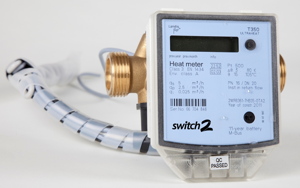Optimising heat networks

The heat network industry is beginning to make a much-needed cultural shift from keeping the heat on at any cost to one that focuses on increasing whole system reliability and efficiency. This is part of a more holistic approach to maintenance and operation.
There is a growing realisation of the importance of optimisation for the following key reasons:
• Improving return on investment and addressing economic deficits via lower operating and maintenance costs
• Ensuring affordable heat tariffs for the residents, who use and pay for heat networks
• Increasing environmental performance to reduce carbon emissions and improve air quality
• Future proofing of heat schemes to accommodate changes in technology and heat sources
• Achieving compliance with regulations
Effective monitoring of heat demand is key to optimisation and any strategy must utilise the information recorded within the plant room. It concerns me to see so few heat networks with remotely connected building energy management systems (BEMS) and the lack of proactive measuring, monitoring and continuous improvement in place.
 |
|
The heat meter - half-hourly reads are recommended for performance optimisation |
A key difference between community heating systems and general heating systems in the UK is that communal systems are on 24/7/365, whereas traditional systems are turned off when they are not in use. This means that it is really important that community heating system operations are optimised at a low demand. The load duration curve is a good benchmark for operators to use when looking at their consumption.
There should be no excuse for not connecting plant rooms with the back office. Alerts from the BEMS could then be meaningful, with operational adjustments carried out before the resident is impacted by a lapse in efficiency or reliability. For example, this might involve all plant room alerts being processed by a server, which groups and prioritises them, enabling them to be presented on a mobile app. The days of maintenance teams finding out about outages from phone calls from irate residents should be a problem of the past.
Heat optimisation should never stop at the plant room. It is essential to review efficiencies in the apartment and buildings served by the heat network.
The significance of the commissioning and maintenance of the apartment heating systems that are connected to the heat network is becoming increasingly recognised in an industry that traditionally focuses on the energy centres. Modern heat meters that are connected to automatic meter reading systems, installed primarily for billing purposes, can now report on more than just the energy consumed.
Volume and temperatures are available from the metered data, which means that average return temperature and flow temperature can be monitored, which are so critical to system performance. This allows operators to spot where maintenance and optimisation is needed. High return temperatures mean excessive pumping costs and higher than necessary heat losses on the return leg. This not only reduces efficiency, but also contributes to overheating, and, of course, a loss of generation efficiency.
Each building connected to the heat network also requires a heat meter, if the heat network falls under the scope of the Heat Network (metering & billing) Regulation 2014. Comparing the headings from these meters to the domestic meters can expose the losses from the heat network. This can highlight return temperature issues caused by incorrectly commissioned and maintained apartment and network bypasses.
 |
|
Heating engineer with the BEMS control system in heat network plant room |
By monitoring the meters over a number of months (including the fiscal gas meter, bulk heat meters and HIU consumption), a full image of heat loss can be identified, this provides a clear picture on where time and effort should be prioritised.
Metering in the energy centre allows the operator to understand the energy flows and where the performance requires attention, as well as where the plant is not delivering the performance expected in the financial model.
Metering pumps to monitor costs is an important indicator of heat network performance and plant condition. Tying this in with a monitoring strategy will give alerts to activity that might require assistance, ensuring a quality heat flow to residents.
We recommend meter reads on a half-hourly basis for performance optimisation purposes. Where there is a particular issue, it is advisable to increase the frequency of readings on large meters. This can support ad hoc monitoring for short periods of time.
While meters provide the information to optimise the system, the BEMS provides the means to do it. That’s why the two technologies should be brought together into one multi-site monitoring platform that can be accessed remotely.
Many heat networks are not optimised because it is too difficult to obtain the required data and to make the necessary changes to the BEMS strategies.
Bringing together information from meters and the BEMs from multiple heat schemes into one portal, and making this resource available to all interested parties, is key to efficient management of a portfolio of heat networks. The platform should also support the process involved in optimisation. By this we mean supporting and making available maintenance and change logs, action lists and alarm feedback logs.
It is one thing analysing detailed data, however the industry needs to find ways to quickly and easily prioritise maintenance work and optimisation activities. The best way to do this appears to be benchmarking performance data, creating league tables and concentrating effort where performance is poorest.
 |
|
Load duration curve for typical social housing tower block |
Heat network optimisation is a collaborative task, which should involve a multi-disciplinary team. This should involve heat network maintenance staff, which may include both the commercial gas engineers and the domestic maintenance team; energy managers, BEMS and metering specialists, together with heat scheme operators and owners and their finance teams. One of the most important stakeholders in the process is the resident, who at the end of the day, is paying the bills.
Bringing the team together is perhaps the most important factor in the optimisation process. However, the success of the team relies on having access to a portal that ties together the information and access they need in a convenient, and easy to digest format. Better still, this should be benchmarked across many heat schemes to raise standards of performance.
Ian Allan is head of Research Development at Switch2Energy







